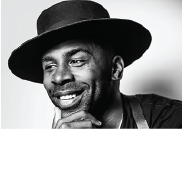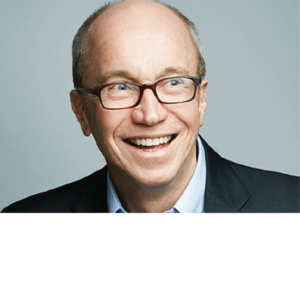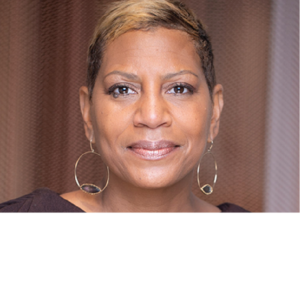2022 HGF Agenda
“Bridging the Divide”
PROGRAM TRACKS
Check back regularly for new additions to the agenda
Bridging:
The Wealth Divide
Bridging:
The Cultural Disconnect
Bridging:
The Opportunity Gap
Bridging:
The Wellbeing Deficiency
December 11
4:00PM | Early Bird Registration Opens
5:00PM | VIP Welcome Reception (invite-only)
6:00PM | OPENING PLENARY
6:00PM | Opening Reception and Dinner (Regency Ballroom)
Hidden field
Your content goes here. Edit or remove this text inline or in the module Content settings. You can also style every aspect of this content in the module Design settings and even apply custom CSS to this text in the module Advanced settings.
Hidden field
Your content goes here. Edit or remove this text inline or in the module Content settings. You can also style every aspect of this content in the module Design settings and even apply custom CSS to this text in the module Advanced settings.
Hidden field
Your content goes here. Edit or remove this text inline or in the module Content settings. You can also style every aspect of this content in the module Design settings and even apply custom CSS to this text in the module Advanced settings.
Hidden field
Your content goes here. Edit or remove this text inline or in the module Content settings. You can also style every aspect of this content in the module Design settings and even apply custom CSS to this text in the module Advanced settings.
Hidden field
Your content goes here. Edit or remove this text inline or in the module Content settings. You can also style every aspect of this content in the module Design settings and even apply custom CSS to this text in the module Advanced settings.
Hidden field
Your content goes here. Edit or remove this text inline or in the module Content settings. You can also style every aspect of this content in the module Design settings and even apply custom CSS to this text in the module Advanced settings.
December 12
Hidden field
Your content goes here. Edit or remove this text inline or in the module Content settings. You can also style every aspect of this content in the module Design settings and even apply custom CSS to this text in the module Advanced settings.
9:00AM | MORNING PLENARY
Hidden field
Your content goes here. Edit or remove this text inline or in the module Content settings. You can also style every aspect of this content in the module Design settings and even apply custom CSS to this text in the module Advanced settings.
Hidden field
Your content goes here. Edit or remove this text inline or in the module Content settings. You can also style every aspect of this content in the module Design settings and even apply custom CSS to this text in the module Advanced settings.
Your Title Goes Here
Your content goes here. Edit or remove this text inline or in the module Content settings. You can also style every aspect of this content in the module Design settings and even apply custom CSS to this text in the module Advanced settings.
Your Title Goes Here
Your content goes here. Edit or remove this text inline or in the module Content settings. You can also style every aspect of this content in the module Design settings and even apply custom CSS to this text in the module Advanced settings.
10:00AM | Champions of Change: Redefining Sports & Social Justice
Hidden field
Your content goes here. Edit or remove this text inline or in the module Content settings. You can also style every aspect of this content in the module Design settings and even apply custom CSS to this text in the module Advanced settings.
11:15AM | STRAIGHT TALKS
Driving Value with Values: Doing Well by Doing Good
s across all industries are beginning to recognize the business value of purpose and are making strong purpose-driven commitments and strategic shifts to differentiate themselves in the market. In fact, purpose strategy is increasingly a business imperative to manage risk; build trust with customers, investors, and other stakeholders; and develop new markets. Backed by strategic investment in the core of the business, including in the systems that enable the company to consistently deliver on its purpose, it can also be a source of competitive advantage.
In 2019, the Business Roundtable released a redefined Statement of Purpose of a Corporation, which declared that companies should serve not only their stakeholders, but deliver values to their customers, employees and communities in which they operate. This upended the decades-long adherence to Milton Friedman’s doctrine that an entity’s greatest responsibility lies in satisfying the shareholders – shareholder primacy. This statement by the Business Roundtable coincided with a new generation of CEO’s taking the helm of legacy companies, a social justice reckoning post-George Floyd and younger generations aligning purchasing decisions to a company’s values. But this thinking is by no means universal, and a new anti-woke, anti-ESG movement has taken hold as a counterbalance.
While a good theory, in practice is there an inherent trade-off between purpose and profit; values and value? Can integrated purpose and clearly defined values drive sustainable, long-term value for the company? How can leaders and organizations integrate values into interactions with customers, workforce and suppliers?
Prospects and Promise: The Future of Work with Wetzel's Pretzels CEO Jenn Schuler
LEARNING CENTER
Long before Covid-19 upended the daily routines of our work lives, businesses were already reevaluating long-established rules of how, when and where we work. The pandemic’s arrival poured accelerant on some of these work trends and forced others to pause. The aftermath underscores just how much the world of work is shifting.
Traditional 9-to-5 employment has undergone a shakeup with the rise of the gig economy and the pandemic-spurred demand for food delivery services like Postmates and Instacart. To make office life more appealing, talent-chasing companies introduced trendy downtown spaces with vast, open floorplans, often tossing in perks like bars, fitness centers and flexible work options like unlimited vacation.
Businesses in virtually every sector of the workforce also tapped into a different kind of talent: automation. In restaurants, robots precisely prepare hamburger patties, sushi and coffee; chatbots “man” desks and phone lines; and complex algorithms scour hundreds of job applicants in minutes to pluck out qualified candidates.
Post-pandemic, it’s unclear which industries will return to the status quo. In a recent KPMG survey of CEOs at companies with more than $500 million in annual revenue, 1 in 5 said business is changed forever. Stubborn inflation, continued supply issues, increased fuel costs and high interest rates have put new pressures on companies and workers alike.
When the dust settles economically, where does this leave workers, professional and low-wage? Can women reestablish themselves in the workforce following COVID-ear departures? Will the entrepreneurial fire lit during the pandemic continue, and is there a new generational divide in approaching work? How will employers and employees have to reevaluate their approach to each other?
Meeting the Moment: How the Public and Private Sectors are Transforming Giving
The philanthropic response to the COVID-19 pandemic, the social justice reckoning following the murder of George Floyd, the humanitarian crisis in Ukraine and multiple natural disasters here at home has shown the sector at its best. From the launch of community-based rapid response funds to the development of vaccines, philanthropy is showing up both to help flatten the curve in the short term and to address the inequities exacerbated by these crises in the long-term.
Confronted by the mammoth challenges of the past few years, individual and institutional giving has been responsive, engaged and flexible, accelerating thinking and changes to the sector that had already been percolating. What’s striking is not only the scale of capital being committed by companies, private donors and governments alike, but also how it is being deployed: at record speed, with fewer conditions and in greater collaboration with others.
The challenge – and opportunity – for the sector will be to make these features stick. The gravitational pull back to traditional ways of working will be strong, especially as donors grapple with the effects of economic downturn.
Has giving changed forever? What were some breakthroughs or innovations from the past few that proved effective, particularly ones that may have seemed risky? What is the role of the private sector moving forward? Should governments play a bigger role, smaller one or different one? What can recipient organizations do to better maximize funding and increase results?
Driving Value with Values: Doing Well by Doing Good
REGENCY VI
Companies across all industries are beginning to recognize the business value of purpose and are making strong purpose-driven commitments and strategic shifts to differentiate themselves in the market. In fact, purpose strategy is increasingly a business imperative to manage risk; build trust with customers, investors, and other stakeholders; and develop new markets. Backed by strategic investment in the core of the business, including in the systems that enable the company to consistently deliver on its purpose, it can also be a source of competitive advantage.
In 2019, the Business Roundtable released a redefined Statement of Purpose of a Corporation, which declared that companies should serve not only their stakeholders, but deliver values to their customers, employees and communities in which they operate. This upended the decades-long adherence to Milton Friedman’s doctrine that an entity’s greatest responsibility lies in satisfying the shareholders – shareholder primacy. This statement by the Business Roundtable coincided with a new generation of CEO’s taking the helm of legacy companies, a social justice reckoning post-George Floyd and younger generations aligning purchasing decisions to a company’s values. But this thinking is by no means universal, and a new anti-woke, anti-ESG movement has taken hold as a counterbalance.
While a good theory, in practice is there an inherent trade-off between purpose and profit; values and value? Can integrated purpose and clearly defined values drive sustainable, long-term value for the company? How can leaders and organizations integrate values into interactions with customers, workforce and suppliers?
One Nation Pulling Apart: The Great Cultural Misunderstanding
REGENCY VII
Much of the 20th century provided a period of fading distinctions, following the ruptures of the Civil War, post-Reconstruction and Jim Crow. A growing separation has now taken hold across America, once again built upon the bedrock differences dating back to our country’s founding.
Multiple social, cultural and religious factors are converging to create a particularly toxic political stew. America is being pulled apart. This phenomenon is geographic, ideological and spiritual. Americans are increasingly clustering in like-minded communities, and surrounding ourselves with people who think like we do has a profound effect. When like-minded people gather, they tend to grow more extreme.
Has political affiliation become the new cultural identifier? Have identity movements strengthened or hurt our ability to find commonalities? How can we find ways to strengthen our oneness, without sacrificing our unique cultures, identities and regions?
12:00PM | LUNCH PLENARY
Hidden field
Your content goes here. Edit or remove this text inline or in the module Content settings. You can also style every aspect of this content in the module Design settings and even apply custom CSS to this text in the module Advanced settings.
Hidden field
Your content goes here. Edit or remove this text inline or in the module Content settings. You can also style every aspect of this content in the module Design settings and even apply custom CSS to this text in the module Advanced settings.
Hidden field
Your content goes here. Edit or remove this text inline or in the module Content settings. You can also style every aspect of this content in the module Design settings and even apply custom CSS to this text in the module Advanced settings.
1:30PM | IDEA LABS
Hidden field
Companies across all industries are beginning to recognize the business value of purpose and are making strong purpose-driven commitments and strategic shifts to differentiate themselves in the market. In fact, purpose strategy is increasingly a business imperative to manage risk; build trust with customers, investors, and other stakeholders; and develop new markets. Backed by strategic investment in the core of the business, including in the systems that enable the company to consistently deliver on its purpose, it can also be a source of competitive advantage.
In 2019, the Business Roundtable released a redefined Statement of Purpose of a Corporation, which declared that companies should serve not only their stakeholders, but deliver values to their customers, employees and communities in which they operate. This upended the decades-long adherence to Milton Friedman’s doctrine that an entity’s greatest responsibility lies in satisfying the shareholders – shareholder primacy. This statement by the Business Roundtable coincided with a new generation of CEO’s taking the helm of legacy companies, a social justice reckoning post-George Floyd and younger generations aligning purchasing decisions to a company’s values. But this thinking is by no means universal, and a new anti-woke, anti-ESG movement has taken hold as a counterbalance.
While a good theory, in practice is there an inherent trade-off between purpose and profit; values and value? Can integrated purpose and clearly defined values drive sustainable, long-term value for the company? How can leaders and organizations integrate values into interactions with customers, workforce and suppliers?
Attention is King: Building a Personal Global Brand
LEARNING CENTER
As a business owner, other businesses are no longer your sole competitors. Anyone who attracts attention away from your business is your competition. Your competition is YouTube, Instagram, Tik Tok, LinkedIn, Apple, Facebook, Hulu, HBO and the hundreds of other media channels that spend billions of dollars to capture your attention. In the 21st century, the only way to build a sustainable business is to create a personal global brand that hooks and captures your customer’s interest. Otherwise, you don’t have a business, you have a hobby.
hidden field
This is a hidden field
Rebooting the American Dream: The Future of Social Mobility
REGENCY V
The core premise of the American Dream is that we live in a place of unlimited opportunity: where everyone who works hard and plays by the rules has a fair shot at making something for themselves and their families, and where each generation of children can do better than their parents.
For decades, the majority of Americans have been able to climb the economic ladder by earning higher incomes than their parents, having access to higher education, being able to own their own home or business, the ability to create a portfolio of investments – all of which supported intergenerational wealth creation. These improving conditions became known as upward mobility, and constitute the essence of the American Dream.
Yet, successive generations are finding it harder to make the ascent, along with historically marginalized groups who have never had an on-ramp to participating in this vision of America. Data continues to show it is becoming harder to achieve this dream, with stagnating wages and income inequality just two of the factors behind this. Most importantly, fewer and fewer people in the lower- and middle-classes are climbing the economic ladder.
Does the American Dream still exist, and can it exist for everyone? How can we solve the shortage of, and lack of access to, affordable housing? Is higher education still a good investment? How can we democratize investing as a means of wealth creation? Can entrepreneurship and small business ownership become a viable option for greater numbers of people? How can we ensure that everyone has access to opportunity, regardless of demography?
Next-Gen Innovations: Driving Financial Inclusion
REGENCY VI
Digital technology is transforming the financial industry, changing the way payments, savings, borrowing, and investment services are provided and who provides them. Fintech and Big Tech companies now compete with banks and other incumbents across a range of markets. Meanwhile, digital currencies promise to transform the heart of finance: money itself.
But just how much has technology advanced financial inclusion? Throughout the pandemic, digital finance helped households and businesses meet the challenges posed by the economic shutdown. It also provided governments new ways of reaching those who need support.
Innovative finance is a set of financial solutions that create scalable and effective ways of channeling both private money and public resources towards solving pressing global problems. This serves two purposes: first, innovative financing is a complementary source of capital to development aid; and second, innovative financing is more effective and efficient by linking financing to results, redistributing risk, improving access to capital, and leveraging technology.
What does all this mean for marginalized communities? What innovative financial tools can help close the gap for Black and Latino individuals and families? How can women and minority-owned businesses benefit? What needs are not currently being addressed?
Underestimated and Underrepresented: Ensuring Equitable Access
REGENCY VII
The perceived tension between inclusion and growth—and the belief that they should be addressed separately—has hampered efforts to pursue and achieve inclusive growth. But in reality, insufficient economic inclusion is a threat to prosperity. It is difficult to improve social mobility and expand economic opportunity without increasing the overall size of the economy.
Up to 40% of GDP growth in the U.S. economy between 1960 and 2010 can be attributed to greater participation of women and people of color in the labor. Economies grow faster and more vigorously—and for longer periods—when prosperity is more equally distributed across segments of the population.
Inclusive growth is both process and outcome: it is about aligning how growth is achieved (or how people access opportunity) with the ultimate outcome of broad, shared prosperity – that is, decent standards of living and overall wellbeing that increase with economic growth.
What can leaders do to support broader participation in the economy? Where will the economic opportunity be in the next 10-20 years? How can underrepresented individuals and communities participate? Can greater financial wellbeing improve overall wellbeing?
3:00PM | AFTERNOON PLENARY
Hidden field
Your content goes here. Edit or remove this text inline or in the module Content settings. You can also style every aspect of this content in the module Design settings and even apply custom CSS to this text in the module Advanced settings.
Hidden field
Your content goes here. Edit or remove this text inline or in the module Content settings. You can also style every aspect of this content in the module Design settings and even apply custom CSS to this text in the module Advanced settings.
Hidden field
Your content goes here. Edit or remove this text inline or in the module Content settings. You can also style every aspect of this content in the module Design settings and even apply custom CSS to this text in the module Advanced settings.
Hidden field
Your content goes here. Edit or remove this text inline or in the module Content settings. You can also style every aspect of this content in the module Design settings and even apply custom CSS to this text in the module Advanced settings.
5:00PM | Social & Network Reception
December 13
8:15AM | Breakfast & Networking
9:15AM | CLOSING PLENARY
Hidden field
Your content goes here. Edit or remove this text inline or in the module Content settings. You can also style every aspect of this content in the module Design settings and even apply custom CSS to this text in the module Advanced settings.
Hidden field
Your content goes here. Edit or remove this text inline or in the module Content settings. You can also style every aspect of this content in the module Design settings and even apply custom CSS to this text in the module Advanced settings.
Hidden field
Your content goes here. Edit or remove this text inline or in the module Content settings. You can also style every aspect of this content in the module Design settings and even apply custom CSS to this text in the module Advanced settings.
Hidden field
Your content goes here. Edit or remove this text inline or in the module Content settings. You can also style every aspect of this content in the module Design settings and even apply custom CSS to this text in the module Advanced settings.
11:30AM | Spotlight: Earn Your Leisure Co-CEOs Rashad Balil and Troy Millings
Hidden field
Your content goes here. Edit or remove this text inline or in the module Content settings. You can also style every aspect of this content in the module Design settings and even apply custom CSS to this text in the module Advanced settings.




















 .
.

















































 .
. 
 .
. 

